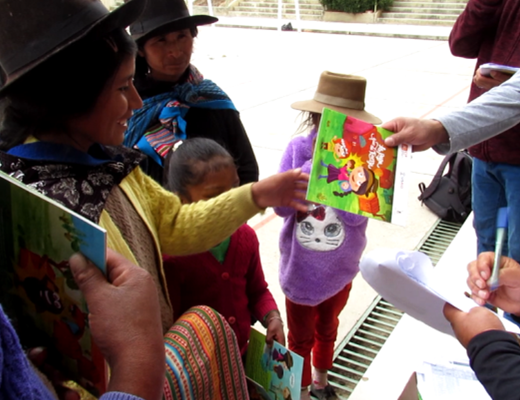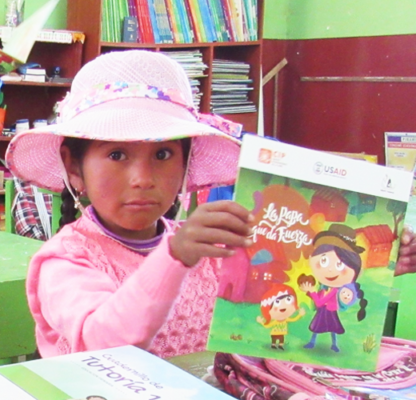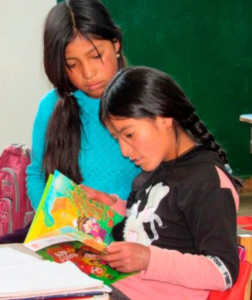A true celebration was experienced by schoolchildren from four rural communities in Huancavelica when they received the printed version of the children’s story “The Powerful potatoes”, a publication intended for the little ones to learn why iron-enriched potatoes should be consumed to prevent anemia.
“The Powerful potatoes” tells the story of a small town that overcame anemia thanks to the consumption of a potato rich in iron and other foods rich in this mineral.
So far, around 800 beautifully illustrated copies have been distributed in the primary schools of Ambato, Castillapata, Paltamachay and Tacsana, rural towns belonging to the district of Yauli, where they had previously worked with the farmers on the participatory selection of potato varieties suitable for biofortification.
Complying with the proper health protocols, the delivery was made at the end of last year, despite the difficult situation created by the pandemic and the reduction in face-to-face classes, which were held once a week, although with reduced capacity (50% of the student body).
The teachers of each one of the schools collaborated enthusiastically, organized the children according to their classrooms and promised to deliver the books to those who live in the most distant places of the communities and could not be present at the time of distribution.
The children who received the story could not hide their excitement and joy as they flipped through its pages, commenting aloud on many images and texts. The students of these communities had many problems to continue their education in the two years when school activities were restricted, due to the lack of technological facilities in the area, so receiving such a carefully edited text was a real help for children and adult your education.

In this way, the International Potato Center (CIP) developed the story in printed and digital versions and distributed it, with funding from USAID, the United States, and UKRI, the United Kingdom. It thus contributes to basic education promotion and science dissemination in areas of difficult access.

“Thank you very much for bringing this type of material that encourages reading through local products that their parents and they themselves know,” said one of the teachers from primary school No. 36118 in Ambato.
At primary school N° 36121, in Castillapata, many mothers came into the school to accompany their children while they received their books, and a grandmother from the community was asked to explain to students what was sought with distributing and reading the books.
The story was written in 2019 by Raul Ccanto and Gabriela Burgos from YANAPAI and CIP, respectively. Its distribution to schools was scheduled for 2020, but had to be postponed due to the pandemic. However, a version of the story was created in video format during that time. It includes a melodious huayno, especially composed by Pepe Toro and Magaly Luque.
The story video (https://www.youtube.com/watch?v=Mu0PzKffHSE) has been available on the YouTube portal since July 2021 and the huayno subtitled in English and Quechua are also available since April 2022.

Biofortification consists of increasing food crop nutritional value to make them richer in a certain vitamin or mineral. In the case of potatoes, the aim is to increase the iron content of several varieties that have been previously selected by the farmers themselves and thus contribute to reducing anemia in Peru and in the world. The consumption of biofortified potatoes, happily depicted in the story, combined with other iron-rich foods, such as those from animal sources and legumes can significantly contribute to reducing anemia in rural and urban populations, especially in children under five years of age.
CIP began working on this process more than 15 years ago, having achieved to date potatoes with 50% more iron than the Yungay variety, which is in great commercial demand. Various promotion and dissemination strategies have been developed for having consumers get to know the advantages of biofortified potatoes, and this story is one of those. With the reopening of face-to-face classes in 2022, distribution is expected to continue in a more effective way, reaching more schools and children.

